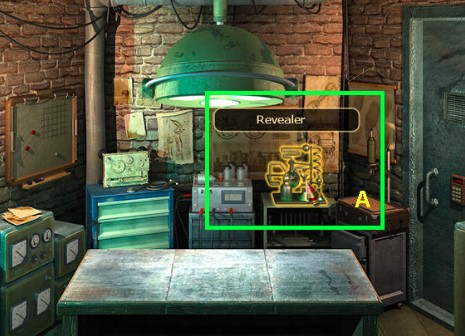In-game artifacts are virtual treasures that enrich the gaming experience, offering players unique abilities, lore, and rewards. This comprehensive exploration delves into the fascinating world of in-game artifacts, from their origins to their significance in gaming culture.

Unraveling the Origins of In-Game Artifacts
In-game artifacts have been a staple of video games since the early days of the industry, often serving as key plot devices or gameplay mechanics. From powerful weapons and enchanted items to mystical relics and legendary artifacts, these virtual treasures have captured the imaginations of gamers for decades.
Evolution of In-Game Artifacts
Over time, the concept of in-game artifacts has evolved to encompass a wide range of items with diverse functionalities and significance. While early artifacts were often simple power-ups or collectibles, modern games feature elaborate artifact systems with complex progression paths, customization options, and strategic implications.
Types of In-Game Artifacts
In-game artifacts come in various forms, each with its own unique characteristics, abilities, and lore. Some common types of in-game artifacts include:
1. Weapons and Armor
Weapons and armor artifacts are items that enhance a player’s combat abilities, providing increased damage, defense, or special abilities. These artifacts range from legendary swords and magical staffs to enchanted armor sets and mystical shields, each with its own lore and backstory.
2. Relics and Artefacts
Relics and artifacts are ancient or mystical items imbued with supernatural powers or historical significance. These artifacts often play a central role in the game’s narrative or questline, requiring players to uncover their secrets, solve puzzles, or overcome challenges to harness their full potential.
3. Consumables and Power-Ups
Consumables and power-ups are temporary artifacts that provide short-term bonuses or effects to players, such as increased health, mana, or experience points. These artifacts are often found in loot drops, treasure chests, or rewards for completing quests or challenges.
4. Cosmetics and Decorative Items
Cosmetic artifacts are items that allow players to customize their characters, avatars, or in-game environments, such as skins, costumes, mounts, or housing decorations. While these artifacts may not provide gameplay advantages, they allow players to express their creativity and individuality in the game world.
Significance of In-Game Artifacts
In-game artifacts play a significant role in shaping the player experience and enriching the game world in several ways:
1. Progression and Customization
In-game artifacts provide players with tangible rewards and goals to strive for, enhancing their sense of progression and achievement. The acquisition and mastery of artifacts allow players to customize their playstyle. To experiment with different strategies, and overcome increasingly difficult challenges.
2. Immersion and Lore
In-game artifacts contribute to the immersive nature of gaming worlds. All by enriching the lore, history, and mythology of the game universe. Players can uncover the stories behind artifacts. They can discover their origins, and unravel the mysteries of the game world. Effectively deepening their engagement and investment in the game’s narrative.
3. Social Interaction and Community
In-game artifacts foster social interaction and community engagement by providing shared goals, achievements, and experiences for players to bond over. Players may collaborate or compete with each other to acquire rare artifacts, trade items, or participate in cooperative quests or events, fostering a sense of camaraderie and belonging within the gaming community.
Challenges and Considerations
While in-game artifacts enhance the gaming experience in many ways, they also present challenges and considerations for game developers and players alike:
1. Balance and Fairness
Balancing in-game artifacts to ensure fairness and competitiveness is a significant challenge for game developers. Overpowered artifacts can disrupt game balance and create unfair advantages for certain players, while underpowered artifacts may feel underwhelming or uninteresting to acquire.
2. Economy and Monetization
The inclusion of in-game treasure in monetization strategies, such as loot boxes, microtransactions, or premium currency, can impact the game’s economy and player experience. Developers must strike a balance between offering desirable artifacts as rewards for gameplay achievements and avoiding pay-to-win mechanics or predatory monetization practices.
3. Longevity and Replayability
In-game treasure contribute to the longevity and replayability of games by providing incentives for continued play and exploration. However, developers must continually introduce new artifacts, content updates, and expansion packs to maintain player interest and prevent stagnation in the game’s ecosystem.
Future Trends and Innovations
Looking ahead, the future of in-game artifacts is characterized by innovation and technological advancements that push the boundaries of player immersion, customization, and engagement. Some emerging trends and innovations in in-game treasureinclude:
1. Procedural Generation and Dynamic Content
Advancements in procedural generation algorithms allow developers to create dynamic, procedurally generated treasure and content that adapt to player actions, preferences, and progression paths. This enables infinite replayability and personalized experiences for players, ensuring that no two playthroughs are ever the same.
2. Blockchain and NFTs
Blockchain technology and non-fungible tokens (NFTs) offer new possibilities for ownership, trading, and monetization of in-game artifacts. By tokenizing treasure as digital assets on the blockchain, players can buy, sell, and trade artifacts securely and transparently, with true ownership and scarcity guaranteed by cryptographic principles.
3. Augmented Reality (AR) and Virtual Reality (VR)
AR and VR technologies provide immersive and interactive experiences that bring in-game treasure to life in the real world. Players can use AR-enabled devices to discover hidden artifacts. They can solve puzzles, and interact with virtual objects overlaid onto the physical environment. Effectively blurring the lines between reality and fiction.
Conclusion
In-game artifacts are more than just virtual items. They are the embodiment of player progress, creativity, and immersion in gaming worlds. By understanding the types, significance, and challenges of in-game treasure, developers and players can harness their full potential to create memorable, engaging, and rewarding gaming experiences that transcend the boundaries of the virtual world.
